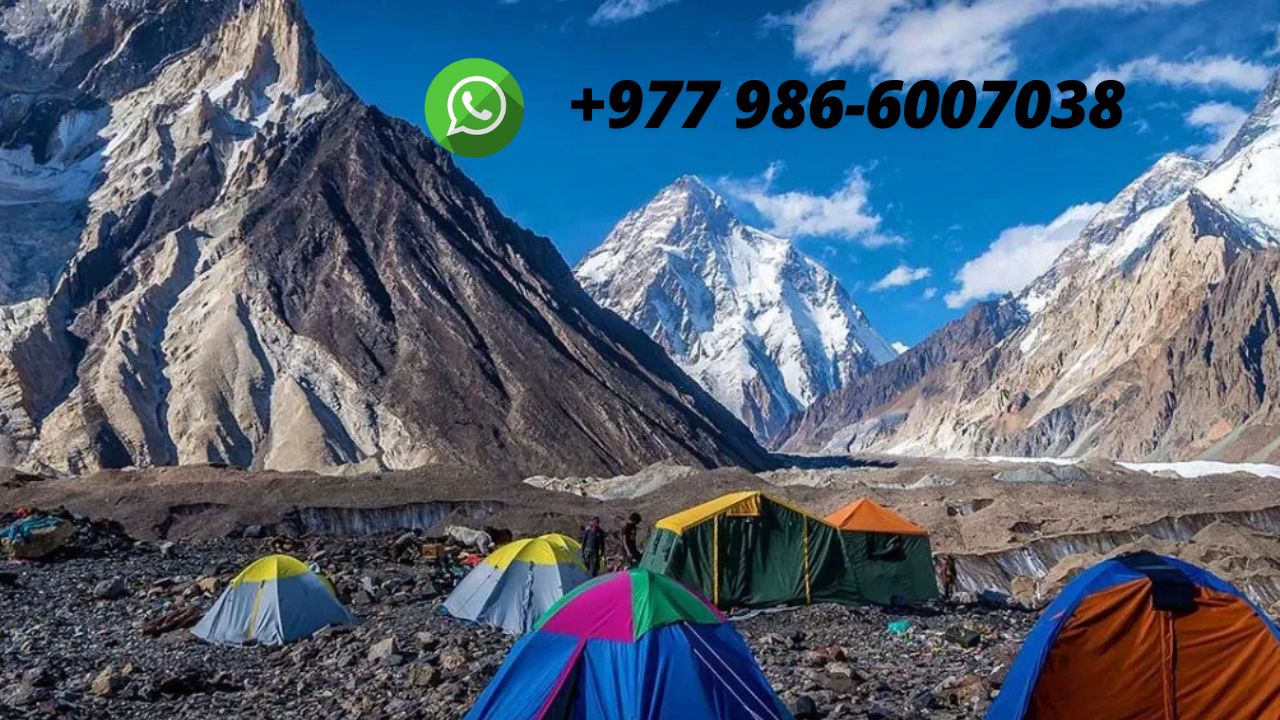The Everest Base Camp Trek is one of the most renowned and sought-after trekking experiences in the world. It’s a journey that takes you into the heart of the Himalayas, through remote villages, dense forests, and high-altitude terrain, all while offering awe-inspiring views of Mount Everest, the world’s highest peak. The trek is not only a test of physical endurance but also an opportunity to witness the raw beauty of nature. However, to ensure your experience is both safe and enjoyable, one of the most critical aspects of preparation is packing the right gear.
An Everest trek packing list is essential for any trekkers embarking on the Everest Base Camp trek. Properly preparing yourself with the correct clothing, accessories, and trekking gear will not only keep you comfortable but also ensure your safety in the harsh conditions of the high-altitude trail. In this comprehensive guide, we’ll take you through the essential gear for the Everest Base Camp trek, offering tips on what to bring, what to leave behind, and how to make the most of your experience in one of the most challenging trekking environments in the world.
Why Proper Packing is Crucial for the Everest Base Camp Trek
The Everest Base Camp Trek is not an easy hike. It’s a journey that will challenge your body, mind, and stamina as you ascend to an altitude of over 5,364 meters (17,598 feet) above sea level. Along the way, trekkers face rugged terrain, extreme weather, and the potential dangers of high-altitude sickness. Properly packing for this trek will help mitigate these challenges.
Packing efficiently for the Everest Base Camp trek means ensuring you’re equipped for variable weather conditions, sudden temperature changes, and the demands of long, strenuous hiking days. At high altitudes, temperatures can fluctuate drastically, so you need layers of clothing to adjust to both the freezing temperatures at night and the warmer conditions during the day. The right trekking gear also minimizes the risk of injuries and fatigue.
In addition to physical preparation, you must also be mindful of the practical aspects of trekking, such as ensuring you have the right gear to carry your supplies, stay hydrated, and navigate challenging terrain. This comprehensive Everest trek packing list will help you cover all the bases so you can enjoy the trek and stay safe.
The Ultimate Everest Trek Packing List
Packing for the Everest Base Camp trek involves more than just throwing things into a bag. You need to consider the weight and functionality of each item you carry, as every extra kilogram matters during this multi-day trek. Below is an organized Everest trek packing list that will ensure you’re ready for the trail.
Essential Trekking Gear
The right trekking gear can make all the difference in your Everest Base Camp trek experience. From backpacks to trekking poles, these essentials are crucial for your comfort and safety.
1. Trekking Backpack
A good-quality, comfortable backpack is essential for any trekking adventure. For the Everest Base Camp trek, choose a backpack with a capacity of 40-50 liters. Look for one that is lightweight yet durable and has multiple compartments for easy organization. It should have padded shoulder straps and a waist belt to evenly distribute the weight and reduce strain on your back. A rain cover for your backpack is also a great idea in case of rain or snow.
2. Daypack
You’ll also need a smaller daypack for short day trips. A 20-25 liter daypack is ideal for carrying only the essentials like your water, snacks, camera, and personal items. This pack should be lightweight and easy to access, allowing you to retrieve items without taking off your main backpack.
3. Sleeping Bag
The Everest Base Camp trek involves staying in teahouses along the way, but at higher altitudes, the temperature can drop significantly, especially at night. A high-quality sleeping bag rated for temperatures as low as -10°C (14°F) is essential. Make sure it’s lightweight and compressible so it doesn’t take up too much space in your backpack.
4. Trekking Poles
Trekking poles are invaluable when navigating uneven, rocky terrain or steep uphill and downhill sections. They help reduce the strain on your knees, especially during descents. Look for adjustable trekking poles with padded handles, and don’t forget to pack rubber tips to prevent the poles from damaging the trail.
5. Water Bottle or Hydration System
Hydration is critical at high altitudes, where the air is dry and you can easily become dehydrated. Bring at least 2-3 liters of water capacity. A combination of reusable water bottles and a hydration system (such as a CamelBak) works well for easy sipping while trekking. A portable water purifier or iodine tablets are also highly recommended to ensure the water you drink is safe.
6. Headlamp and Extra Batteries
You’ll be starting many days of trekking early in the morning or may be walking in the dark for other reasons. A headlamp is essential for navigating the trail in low light. Be sure to bring extra batteries, as charging options along the trek can be limited.
7. First Aid Kit
A small, well-stocked first aid kit is a must for any trek. Include essentials like bandages, antiseptic cream, painkillers, blister treatment, and any prescription medications you may need. Don’t forget basic personal hygiene items like hand sanitizer and disinfecting wipes.
Clothing for the Everest Base Camp Trek
When trekking in the Everest region, it’s crucial to pack clothing that is versatile, durable, and capable of adapting to the changing weather. Layering is the best approach to stay comfortable throughout your trek.
1. Base Layers
Your base layer should be made of moisture-wicking material like merino wool or synthetic fabrics. These fabrics help regulate your body temperature by drawing sweat away from the skin. Bring both long-sleeve shirts and long pants for cold days and short sleeves for warmer weather.
2. Mid-Layer
A good mid-layer, such as a fleece jacket or a down vest, is ideal for providing warmth while still allowing for movement. This layer should be light enough to pack but warm enough to keep you insulated on colder days.
3. Outer Layer
A waterproof and windproof outer layer is essential. It should protect you from rain, snow, and wind, all of which are common at higher altitudes. A durable, breathable shell jacket is ideal, along with waterproof pants that can be easily packed away when not needed.
4. Down Jacket
A down jacket is a critical piece of gear for the Everest Base Camp trek. It will keep you warm during early mornings, late nights, and at higher elevations where temperatures can drop well below freezing. Opt for a lightweight, compressible jacket that can easily fit into your backpack when not in use.
5. Trekking Pants
Trekking pants should be made of breathable, durable, and flexible fabric. Avoid jeans or cotton pants, as they will retain moisture and can become uncomfortable. Convertible pants that zip off into shorts can be a great option for varying temperatures.
6. Trekking Boots
Comfortable, well-fitting, and sturdy trekking boots are essential for a successful trek. Your boots should be waterproof, provide good ankle support, and have a solid grip for tackling uneven terrain. Be sure to break in your boots before the trek to avoid blisters.
7. Socks
Pack several pairs of high-quality, moisture-wicking socks. Merino wool socks are great because they keep your feet dry and warm even when wet. Consider bringing thicker socks for higher altitudes and thinner socks for lower elevations.
8. Gloves, Hat, and Buff
Cold temperatures at high altitudes can make your hands, ears, and neck vulnerable to frostbite. Bring a warm pair of gloves, a hat to protect your head from the cold, and a neck buff or scarf to cover your neck and face.
9. Sunglasses and Sunscreen
The sun at high altitudes is extremely intense, and the reflection from the snow and ice can cause severe eye damage. Ensure you have a high-quality pair of UV-blocking sunglasses. Apply sunscreen with high SPF regularly to protect your skin from harmful UV rays.
Personal Accessories for the Everest Base Camp Trek
In addition to clothing and gear, there are other essential accessories you’ll need to enhance your comfort and safety on the trek.
1. Camera or Smartphone
You’ll want to capture the magnificent views and landscapes along the way. A camera or smartphone with a good camera is a must. Don’t forget extra memory cards and a portable power bank to keep your devices charged.
2. Power Bank
Charging facilities on the trail can be sparse, especially in remote areas. A portable power bank is essential to keep your phone, camera, and other electronic devices charged.
3. Travel Insurance
While not a physical item you pack, having comprehensive travel insurance is crucial. Ensure that it covers emergency medical treatment, helicopter evacuation in case of severe altitude sickness, and other potential emergencies.
4. Snacks
High-energy, lightweight snacks such as granola bars, nuts, dried fruit, and chocolate are excellent options. They’ll keep your energy up during long stretches of the hike between teahouses.
5. Towel
A quick-drying microfiber towel is perfect for freshening up after long days on the trail. It’s lightweight and compact, making it easy to pack without adding much weight.
Important Documents and Permits
1. Passport and Visa
Don’t forget your passport, which should have at least six months’ validity. A visa is required for entry into Nepal and can be obtained on arrival at the Tribhuvan International Airport or through the Nepali consulate in your country.
2. Trekking Permits
You’ll need the following permits to trek to Everest Base Camp:
- Sagarmatha National Park Permit
- TIMS (Trekkers’ Information Management System) Permit Make sure to acquire these permits in advance or at the entry point of the park, typically in the town of Lukla or Monjo.
This comprehensive packing guide covers all the essentials for the Everest Base Camp trek, ensuring you’re well-prepared for this once-in-a-lifetime adventure. Being properly equipped is key to having an enjoyable and safe trekking experience, so invest in high-quality gear, plan your packing carefully, and prepare to take in the breathtaking beauty of the Himalayas. With the right gear, you’ll be able to enjoy the journey to Everest Base Camp without unnecessary discomfort or stress.





